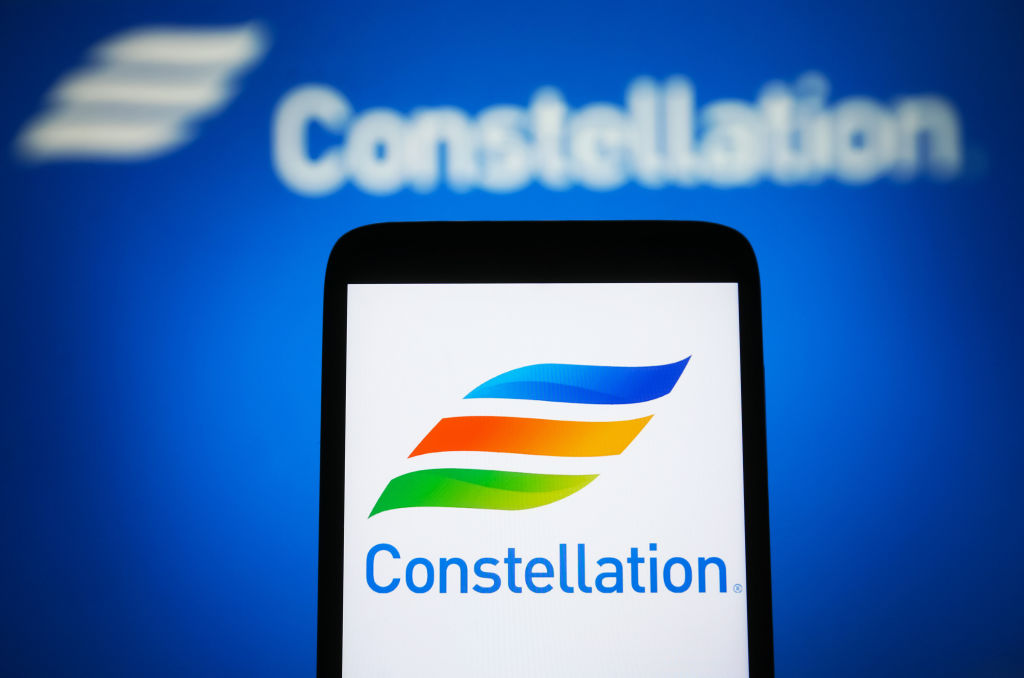How Direct Indexing Could Work for You
Tax efficiency is the primary goal for many new direct indexing offerings, but they come with a lot of caveats.

Take advantage of an investing strategy only institutional or ultra-high-net-worth investors had access to in the past. Increase your investment portfolio’s after-tax return. Build your own index fund to invest in what matters to you. It’s tempting to dismiss these marketing claims as hyperbole, except they are coming from some of the best-known and most-respected names in the investing world, including Fidelity, Schwab and even Burton Malkiel, author of the investing classic A Random Walk Down Wall Street.
The fanfare is about a controversial trend: A growing number of investment firms now offer Main Street investors a strategy called “personalized” or “direct” indexing that typically requires buying and trading stocks directly, mimicking an index. Investment firms and advisers have long offered this strategy to the wealthy for an annual management fee that’s often more than 1% of the portfolio’s value. But now, enabled by no-commission trading, smart supercomputer programs and the ability to buy fractions of shares, at least three firms—Fidelity, Schwab and Wealthfront—are repackaging the service for cost-conscious index investors. The new offerings enable you to dabble in personalized indexing with portfolios as small as $1, for fees ranging from $4.99 a month to 0.4% a year (see the table below).
There are two main types of these new programs. One focuses on personalizing your portfolio by allowing you to invest in thematic baskets of individual stocks—green energy firms, for example—or to tailor a broader index by eliminating companies you may object to or that you have large positions in elsewhere. The other type, which typically allows less personalization, is all about tax efficiency, focused on harvesting investment losses to offset gains or income and reduce your bill on April 15.
From just $107.88 $24.99 for Kiplinger Personal Finance
Become a smarter, better informed investor. Subscribe from just $107.88 $24.99, plus get up to 4 Special Issues

Sign up for Kiplinger’s Free Newsletters
Profit and prosper with the best of expert advice on investing, taxes, retirement, personal finance and more - straight to your e-mail.
Profit and prosper with the best of expert advice - straight to your e-mail.
Why not just pick the stocks on your own? Few average investors have the time and expertise either to buy and manage potentially hundreds of stocks in a way that replicates an index or to constantly swap money-losing stocks for similar issues to lock in tax losses.
Healthy Skepticism For Direct Indexing
Any new Wall Street offering should be scrutinized. And this one has plenty of critics: Rick Ferri, a financial adviser and president of the John C. Bogle Center for Financial Literacy, questions the fees and wonders whether the customized portfolios might make it harder to move assets from the provider who built the personalized index.
As for tax efficiency, investors will have to weigh any advantage against the increased complexity of their tax returns: Schwab (which requires potential new clients to have a no-cost consultation with one of its advisers) warns its Personalized Indexing investors to expect 1099 tax forms that can exceed 50 pages, for example. And some individual investors might consider the minimum investment at Schwab and Wealthfront—$100,000—on the high side.
Reasons to Invest
Even boosters—including fund-research giant Morningstar, which plans to roll out a direct indexing program to be sold through advisers late in 2022—concede that these new indexes aren’t for everyone. Daniel Needham, president of Morningstar’s Wealth Management Solutions, urges investors to first protect their core savings by building up an emergency fund and using tax-advantaged retirement-savings accounts to invest in the tried-and-true mix of low-cost stock and bond index funds. Once that’s done, he says there are three main reasons an investor might consider a personalized index:
Preferences. Although there are already more than 10,000 mutual and exchange-traded funds with almost every imaginable mix of stocks, some investors may prefer to create a portfolio of individual stocks to address ethical or other concerns. Customization might be limited, though. Customers of Fidelity’s managed FidFolios can jettison up to five stocks or two industries from Fidelity’s preset portfolios; for now, Schwab’s clients can bar only three stocks after selecting a portfolio. An exception is Wealthfront, which gives clients the ability to eliminate an unlimited number of stocks from their personalized index.
Balance. Employees of companies that offer significant stock compensation (tech firms, for example) may want to limit tech exposure elsewhere. They could create a personalized index that avoids the tech stocks that make up more than one-fourth of the S&P 500, diversification that could reduce overall portfolio risk.
Taxes. Investors in high tax brackets who expect to reap significant capital gains can use personalized indexing to turbocharge tax loss harvesting in taxable brokerage accounts. The technique involves selling an investment that has declined in value and using the losses to offset taxes on capital gains from other investments (or up to $3,000 in income if losses exceed gains). To stay fully invested, investors use the proceeds to buy something similar.
This requires expertise, because the IRS’s “wash sale” rule penalizes you for switching into investments that look “substantially identical” to whatever you sold in the past 30 days. You can’t sell and then buy back GM shares within the next month, for example. But you can sell GM and buy Ford
| Name | Fee | Minimum investment | Primary goal | Types of accounts |
|---|---|---|---|---|
| Fidelity Solo FidFolios | $4.99/month | $1 | Personalization | Taxable and some IRAs |
| Fidelity Managed FidFolios | 0.4%/year | $5,000 | Tax-loss harvesting | Taxable |
| Schwab Personalized Indexing | 0.35%-0.4%/year depending on assets invested | $100,000 | Tax-loss harvesting | Taxable |
| Wealthfront US Direct Indexing | 0.25%/year | $100,000 | Tax-loss harvesting | Taxable |
Losses are abundant these days in mutual funds and ETFs, of course, but direct-indexing promoters claim that holding individual stocks allows you to cash in on losses that might be obscured by the overall return of a broad index fund. “Even in a good year, 20% to 30% of stocks will be down,” explains D.J. Tierney, a senior portfolio strategist for Schwab Asset Management Solutions.
The boosters say tax-loss harvesting can be worth the work. A Wealthfront study says that over the five-year period ending April 30, the after-tax returns of the firm’s US Direct Indexing clients were typically 0.4 to 0.8 percentage point a year ahead of where they would have been had they stuck with ETFs and used standard tax-loss harvesting strategies.
Malkiel, Wealthfront’s chief investment officer, says that tax loss harvesting is one of the only exceptions he makes to his passive-index-investing advice: “I absolutely believe in direct indexing. It is really very helpful in times like this, when the market has declined so sharply.”
But other cost-conscious investment advisers say most investors don’t pay enough taxes to make the strategy worthwhile, unless they expect large capital gains. It shouldn’t be surprising that a complicated tax strategy pays off most for those with high tax bills. For everybody else, personalized indexing, it seems, is like hiring a tailor to craft a bespoke shirt. Creating a customized stock portfolio for a fee might be a luxury to invest in only after taking care of the necessities.
Profit and prosper with the best of Kiplinger's advice on investing, taxes, retirement, personal finance and much more. Delivered daily. Enter your email in the box and click Sign Me Up.

Kim Clark is a veteran financial journalist who has worked at Fortune, U.S News & World Report and Money magazines. She was part of a team that won a Gerald Loeb award for coverage of elder finances, and she won the Education Writers Association's top magazine investigative prize for exposing insurance agents who used false claims about college financial aid to sell policies. As a Kiplinger Fellow at Ohio State University, she studied delivery of digital news and information. Most recently, she worked as a deputy director of the Education Writers Association, leading the training of higher education journalists around the country. She is also a prize-winning gardener, and in her spare time, picks up litter.
-
 I'm want to give my 3 grandkids $5K each for Christmas.
I'm want to give my 3 grandkids $5K each for Christmas.You're comfortably retired and want to give your grandkids a big Christmas check, but their parents are worried they might spend it all. We ask the pros for help.
-
 If You're Not Doing Roth Conversions, You Need to Read This
If You're Not Doing Roth Conversions, You Need to Read ThisRoth conversions and other Roth strategies can be complex, but don't dismiss these tax planning tools outright. They could really work for you and your heirs.
-
 Could Traditional Retirement Expectations Be Killing Us?
Could Traditional Retirement Expectations Be Killing Us?A retirement psychologist makes the case: A fulfilling retirement begins with a blueprint for living, rather than simply the accumulation of a large nest egg.
-
 Why Wells Fargo's Revenue Miss Isn't Worrying Wall Street
Why Wells Fargo's Revenue Miss Isn't Worrying Wall StreetWells Fargo is one of the best S&P 500 stocks Wednesday even after the big bank's top-line miss. Here's what you need to know.
-
 Constellation Energy Stock Soars on Its $26 Billion Buy. Here's Why Wall Street Likes the Deal
Constellation Energy Stock Soars on Its $26 Billion Buy. Here's Why Wall Street Likes the DealConstellation Energy is one of the best S&P 500 stocks Friday after the utility said it will buy Calpine in a cash-and-stock deal valued at $26 billion.
-
 What Scott Bessent's Treasury Secretary Nomination Means for Investors
What Scott Bessent's Treasury Secretary Nomination Means for InvestorsMarkets are reacting positively to Trump's nomination of Scott Bessent for Treasury secretary. Here's why.
-
 TJX Stock: Wall Street Stays Bullish After Earnings
TJX Stock: Wall Street Stays Bullish After EarningsTJX stock is trading lower Wednesday despite the TJ Maxx owner's beat-and-raise quarter, but analysts aren't worried. Here's why.
-
 Cisco Stock: Why Wall Street Is Bullish After Earnings
Cisco Stock: Why Wall Street Is Bullish After EarningsCisco stock is lower Thursday despite the tech giant's beat-and-raise quarter, but analysts aren't concerned. Here's what you need to know.
-
 Apple Stock Slips After Earnings. Wall Street Isn't Worried
Apple Stock Slips After Earnings. Wall Street Isn't WorriedApple stock is trading lower Friday despite the iPhone maker beating expectations for its fiscal fourth quarter, but analysts are still bullish.
-
 Tesla's Robotaxi Event: What Wall Street Expects
Tesla's Robotaxi Event: What Wall Street ExpectsTesla’s robotaxi event kicks off next week. Here’s what Wall Street expects to see and how analysts feel about the stock heading into the event.
-
 Dell Stock: Wall Street Sees More Upside After Earnings
Dell Stock: Wall Street Sees More Upside After EarningsDell stock is higher Friday after the PC maker beat Q2 expectations, but analysts think there's more room to run. Here's what you need to know.
